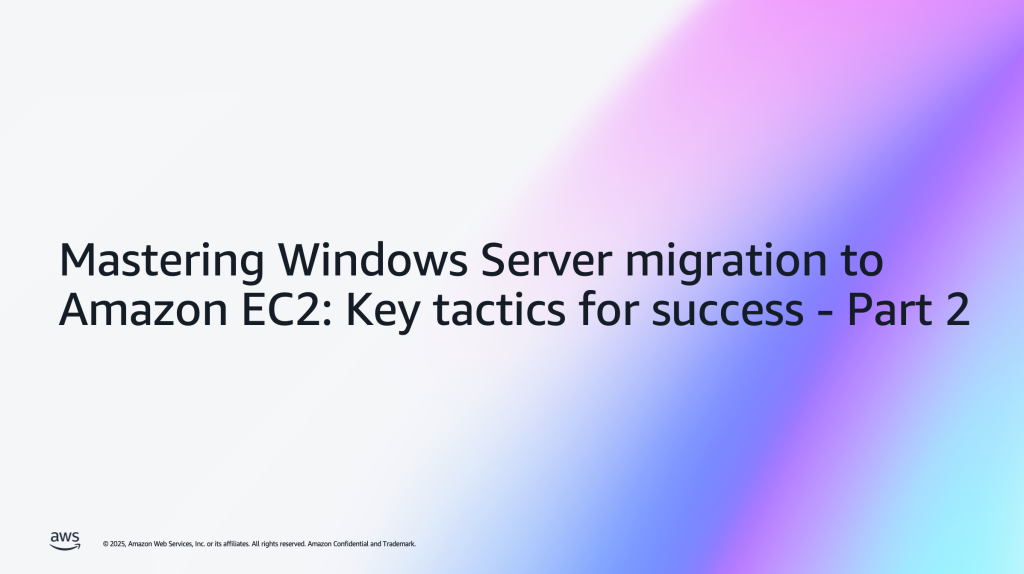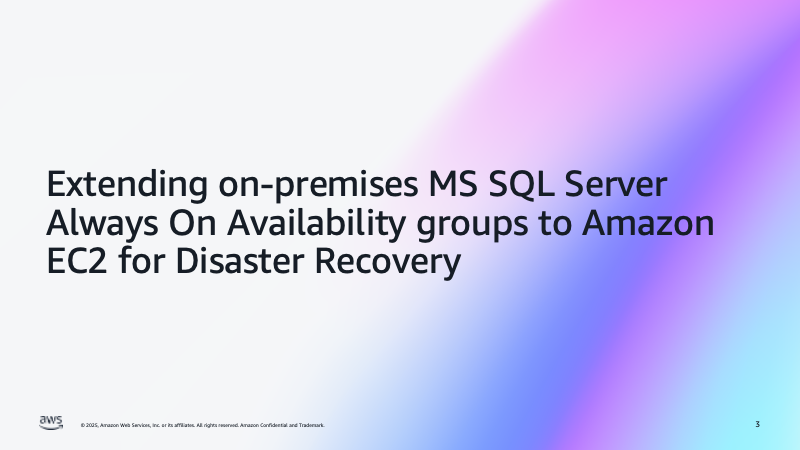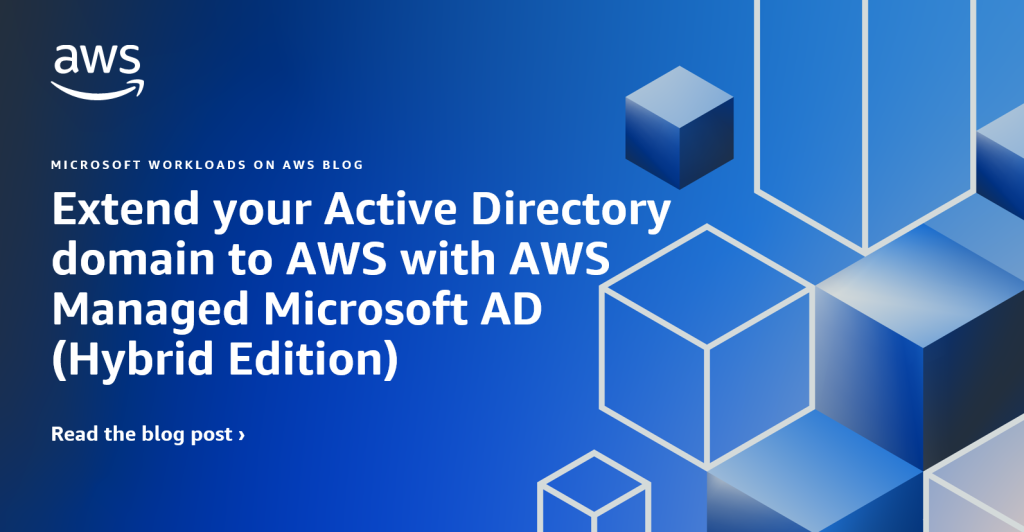Microsoft Workloads on AWS
Mastering Windows Server migration to Amazon EC2: Key tactics for success – Part 2
Introduction This two-part series equips you with essential knowledge for a successful Windows Server migration to Amazon Elastic Compute Cloud (Amazon EC2). Part 1 laid the groundwork by exploring critical licensing decisions and Active Directory integration strategies. Building on that foundation, this post delves into the technical intricacies of preparing your Windows Server instances for […]
Extending on-premises MS SQL Server Always On Availability groups to Amazon EC2 for Disaster Recovery
This post shows how to implement a hybrid disaster recovery solution by extending your on-premises Microsoft SQL Server Always On Availability Group (AOAG) to SQL Server on Amazon Elastic Compute Cloud (Amazon EC2). Introduction Many Organizations need cloud-based disaster recovery solutions that maintain critical on-premises operations while minimizing costs. This post demonstrates how to extend […]
Extend your Active Directory domain to AWS with AWS Managed Microsoft AD (Hybrid Edition)
Introduction Today, we are announcing the general availability of the Hybrid Edition of AWS Directory Service for Microsoft Active Directory (AWS Managed Microsoft AD). This new edition lets you extend your existing self-managed Active Directory (AD) domain to AWS Managed Microsoft AD while preserving your current identity and access infrastructure. AWS Managed Microsoft AD (Hybrid […]
How TEKsystems Modernized a University’s Microsoft Workloads on AWS
In this blog post, we will describe how TEKsystems Global Services (TGS) worked with a university to modernize their legacy .NET Framework 3.5 applications to .NET 8 based microservices and Microsoft SQL Server (SQL Server) to Amazon Aurora PostgreSQL (Aurora PostgreSQL). TGS is an Amazon Web Services (AWS) premier tier services partner leading digital transformation […]
Operating BYOL Windows Server Workloads Effectively on AWS
One way that customers running Microsoft Workloads on Amazon Web Services (AWS) may reduce costs is taking advantage of Bring Your Own License (BYOL) for eligible licenses they own. In this blog post, we are going to share a few practices to help you optimize your operation of BYOL Windows Server workloads on AWS. Introduction […]
Deploy SQL Server Container Clusters using Amazon EKS and Amazon FSx for Windows
Introduction This blog post shows how to deploy a highly available SQL Server instance in a container using Amazon Elastic Kubernetes Service (Amazon EKS) with persistent storage backed by Amazon FSx for Windows File Server. Running databases and other stateful workloads in containers has grown significantly over the years. According to the CNCF Annual Survey […]
Modernize .NET applications at scale with AWS Transform for .NET
Introduction This blog post will walk you through a sample transformation using the new AWS Transform for .NET web experience. You’ll learn how to set up your environment, configure connections, execute the transformation process, and analyze results. Organizations running .NET Framework applications face growing challenges with licensing costs, scalability, and security while continuing to rely […]
Port your .NET Framework applications to Linux with AWS Transform for .NET
Recently, we announced the general availability of AWS Transform for .NET, the first agentic AI service for modernizing .NET applications at scale. With AWS Transform for .NET, you can accelerate modernization of .NET Framework applications to cross-platform .NET by up to 4x. Since .NET 8 and later are cross-platform, you can run your .NET 8 […]
Containerize your legacy ASP.NET application in a few clicks using AWS Migration Hub Orchestrator
In this blog post, we will cover how to containerize and deploy an ASP.NET application running on an Amazon Elastic Compute Cloud (Amazon EC2) for Microsoft Windows Server instance to Amazon ECS on AWS Fargate using AWS Migration Hub Orchestrator.
Testing 3-tier Windows app resilience on AWS with Resilience Testing
Resilience testing has emerged as a critical practice for organizations seeking to build and maintain resilient cloud applications. As environments grow more complex, more comprehensive testing methods become necessary. Resilience testing principles can be applied to Windows workloads on AWS to create controlled experiments that test system behavior under stress. These experiments can help you […]









